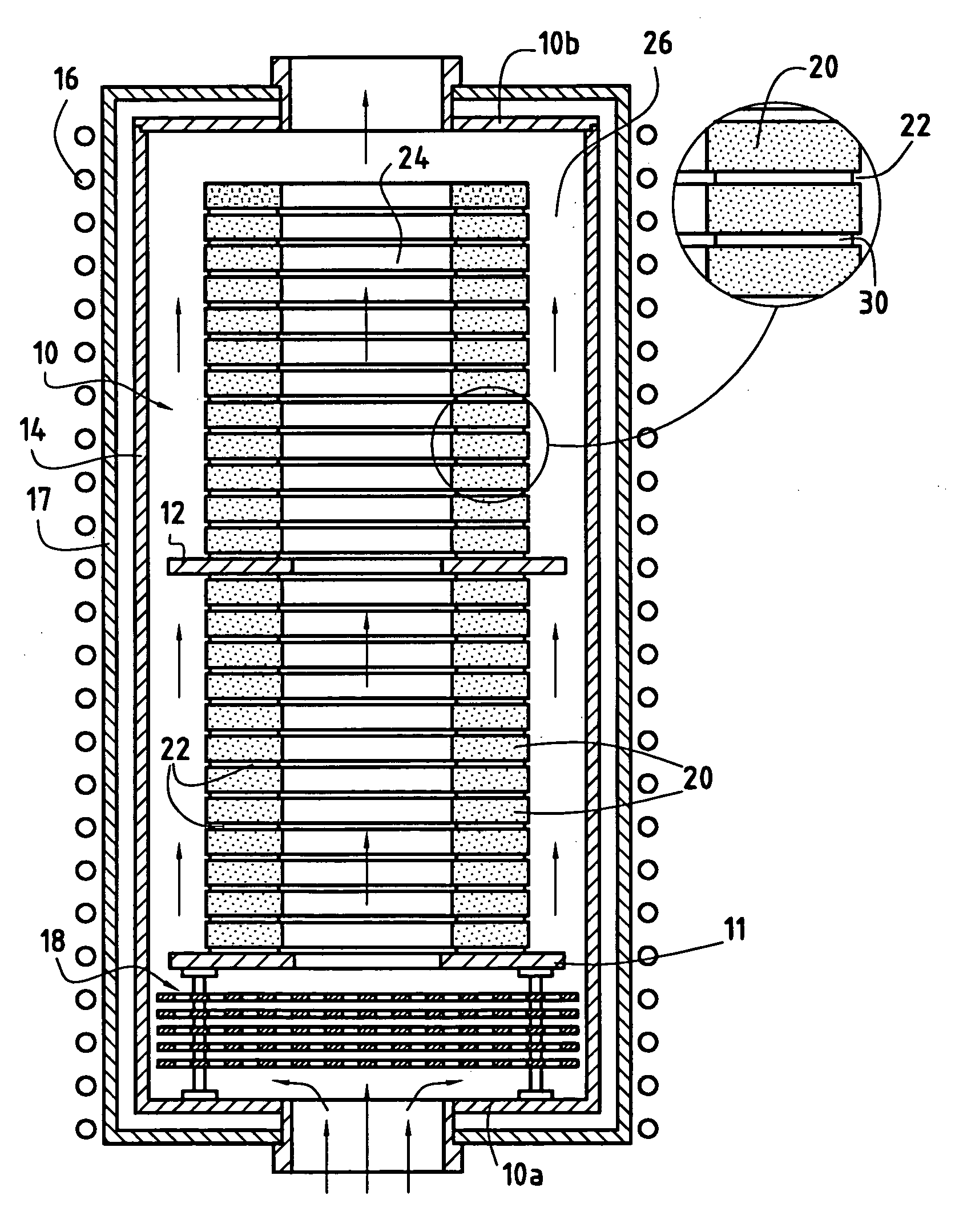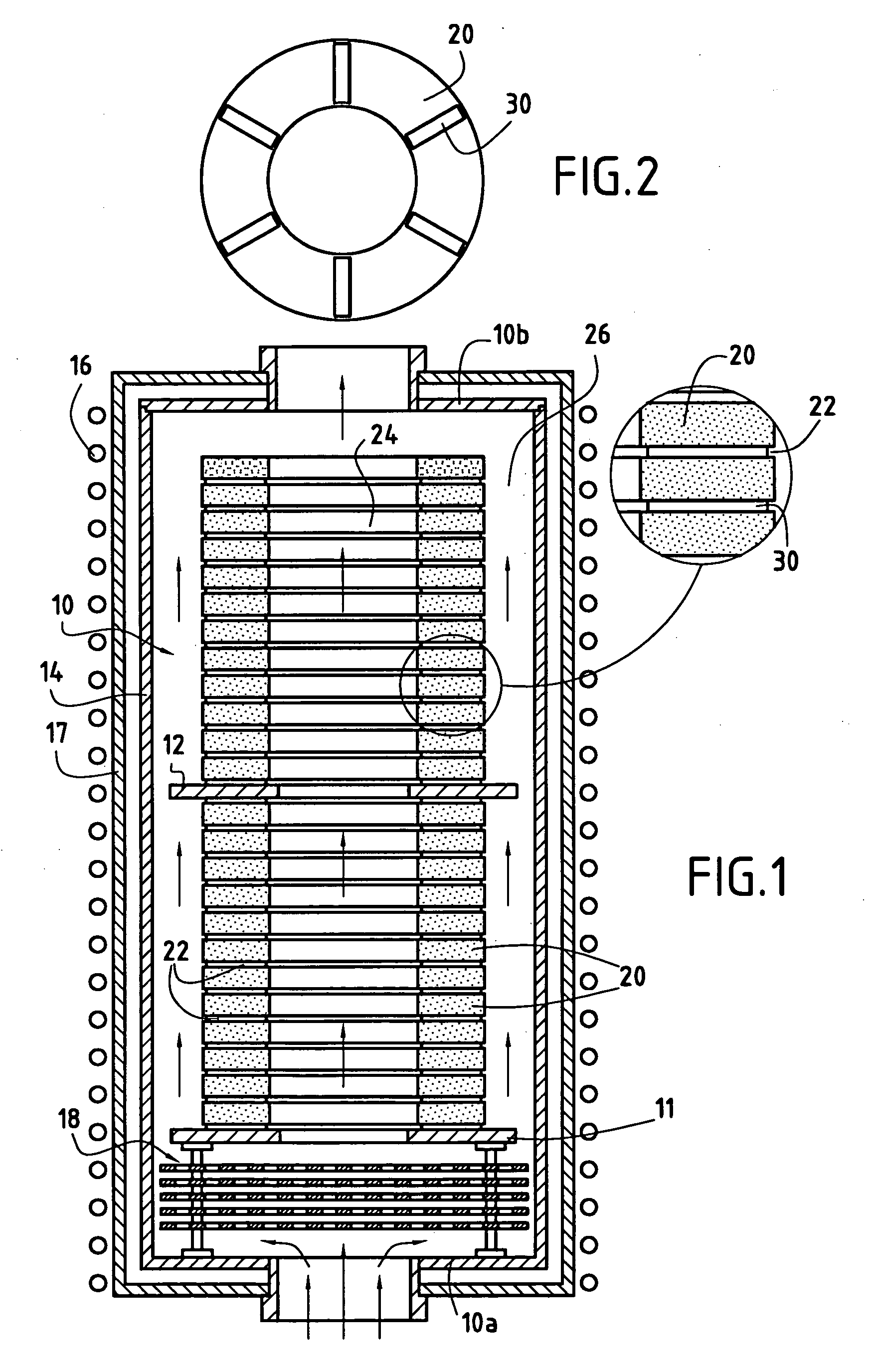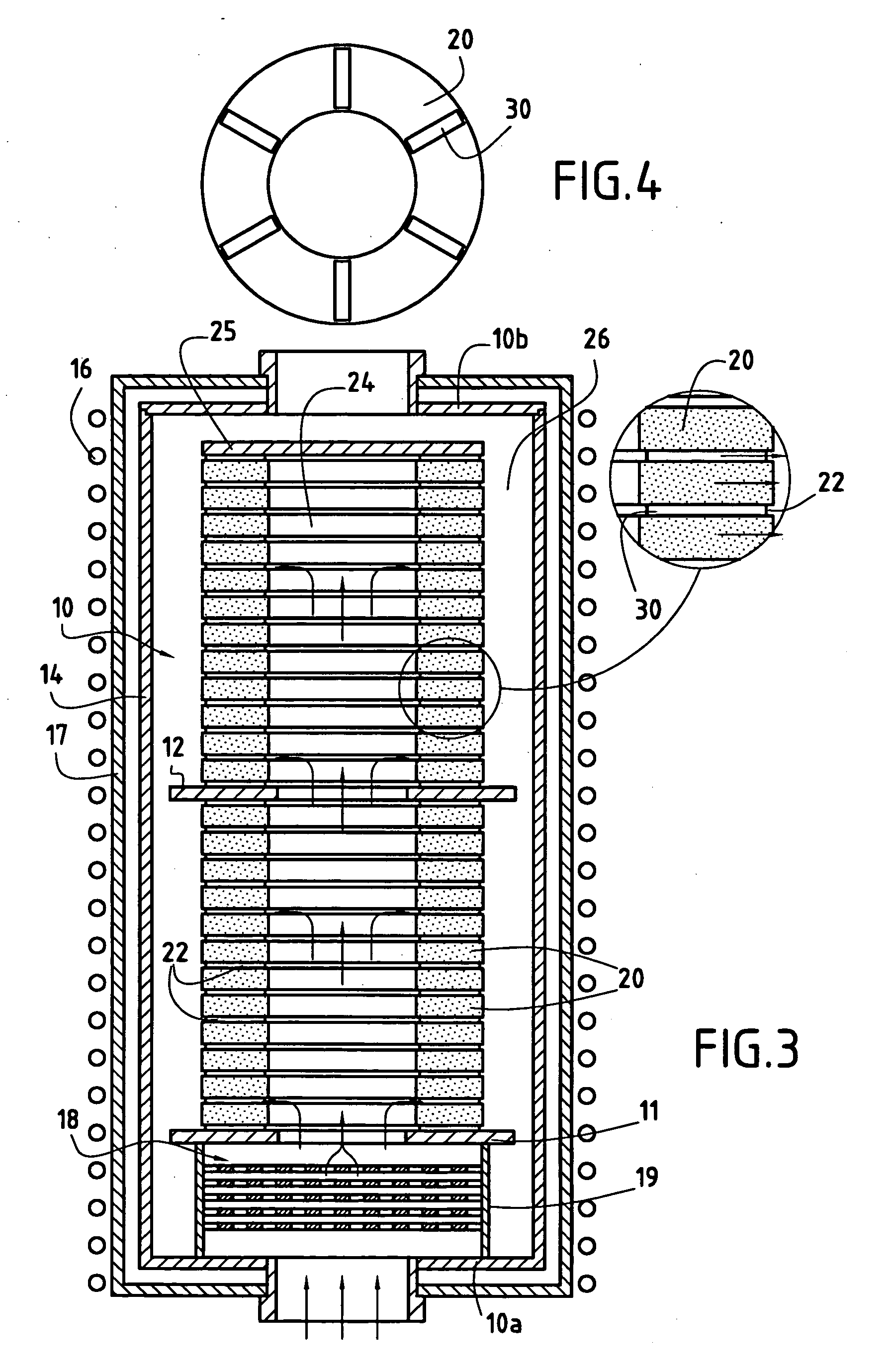Chemical vapour infiltration method for densifying porous substrates having a central passage
a technology of porous substrates and vapour infiltration methods, which is applied in the direction of chemical vapor deposition coatings, coatings, jet propulsion plants, etc., can solve the problems of poor densification of substrates 20 with reactive gases, difficult process implementation, and high pressure in the center of the stack, so as to achieve high densification
- Summary
- Abstract
- Description
- Claims
- Application Information
AI Technical Summary
Benefits of technology
Problems solved by technology
Method used
Image
Examples
example
[0102] An example of determining the total leakage section S is given below for a load of annular substrates constituting preforms for carbon brake disks.
[0103] The initial load was made up of 23 substrates stacked without any densification. Each substrate was constituted by a plurality of needled-together sheets of carbon fibers. Making preforms of this type for brake disks for use in aviation or in motor racing is well known. The substrates present an inside diameter of 26 centimeters (cm), an outside diameter of 48 cm, a height (thickness) of 3.6 cm, and a fiber volume fraction of 23% (percentage of the volume of the disks that is occupied by the fibers).
[0104] Initially, the pressure gradient between the inside and the outside of the stack was measured for different admitted gas flow rates, using annular spacers that were solid so as to leave no leakage passage (S=0), i.e. in a situation of forced-flow infiltration as described in above-mentioned document EP 0 792 385. Measureme...
PUM
| Property | Measurement | Unit |
|---|---|---|
| volume fraction | aaaaa | aaaaa |
| thickness | aaaaa | aaaaa |
| diameter | aaaaa | aaaaa |
Abstract
Description
Claims
Application Information
 Login to View More
Login to View More - R&D
- Intellectual Property
- Life Sciences
- Materials
- Tech Scout
- Unparalleled Data Quality
- Higher Quality Content
- 60% Fewer Hallucinations
Browse by: Latest US Patents, China's latest patents, Technical Efficacy Thesaurus, Application Domain, Technology Topic, Popular Technical Reports.
© 2025 PatSnap. All rights reserved.Legal|Privacy policy|Modern Slavery Act Transparency Statement|Sitemap|About US| Contact US: help@patsnap.com



